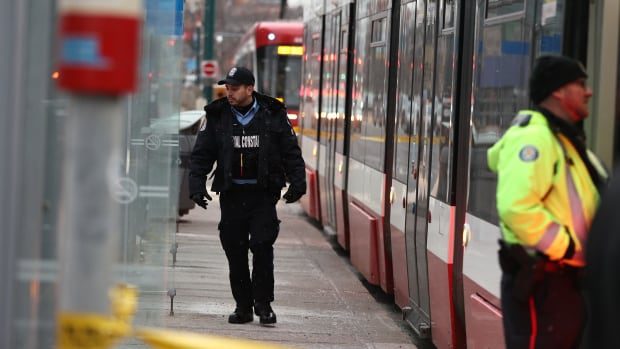Global Courant 2023-04-20 21:58:52
As Canadian cities look for ways to combat violence in public transportation, experts say strategies south of the border that combine law enforcement, social support and community involvement could offer new solutions.
Violence on transit has received national attention in recent weeks. A 17-year-old boy was fatally stabbed on a bus in Surrey, BC last week, a man suffered life-threatening injuries after having his throat slit on a bus in the same Metro Vancouver city earlier this month, and a 16-year-old boy was stabbed to death in March in an unprovoked attack on a Toronto subway station.
Those high-profile cases were one of many other instances of aggression during transit in various cities.
Transit agencies and police have been trying to understand what is causing the violence, with some pointing to the pandemic as a factor.
Experts say some U.S. cities have taken a multi-pronged approach to violence in transit, tackling issues such as housing, mental health and substance abuse alongside safety issues as they work to make subways, buses and stations safer.
Looking south
The Southeastern Pennsylvania Transportation Authority (SEPTA), which serves the city of Philadelphia and surrounding areas, has attracted particular interest.
The SCOPE program, which stands for safety, cleaning, ownership, partnership and involvement, connects vulnerable residents with social services and aims to keep the transport system safe and clean for those who use it.
There are police and social workers involved, as well as partnerships with arts programs and a pilot project where medical students help provide health resources.
“The SCOPE program in Philadelphia is currently being viewed with great interest in the transportation industry as the agencies look for a bit of a North Star,” said David Cooper, founder of Toronto-based transportation planning firm Leading Mobility.
“The SEPTA SCOPE program is probably one of the programs where they have deployed the most number of tools.”
SCOPE staff provide a range of outreach services to vulnerable people in transit, but if those are denied, the person won’t have the option of lingering in the system, Cooper said.
“They’re told to leave the station and that adds a lot of complexity,” said Cooper, who has held transportation planning and policy positions in Calgary, Vancouver and Toronto.
A Toronto police officer walks past a TTC streetcar after a woman was stabbed several times on board in January. (Evan Mitsui/CBC)
Social issues, including housing and mental health, have converged on public transportation in recent years because that was one of the few public spaces that remained open during the COVID-19 pandemic, Cooper said.
Transit agencies responded with approaches that pair security officers with street workers, but the challenge is that those efforts require trust to be truly effective, Cooper said.
“Transit operators or transit systems are responsible for moving people,” he said. “They don’t have the skills when it comes to mental health, addictions and housing.”
SEPTA also runs a program called SAVE, which stands for “saving a vulnerable entity.” It sees police and social workers working together on the transportation system, but focuses more on engagement and relationship building than enforcement, said Jerry Ratcliffe, a criminal justice professor at Temple University in Philadelphia.
Early observations show that vulnerable populations in transit are more likely to accept support services if they have an existing relationship with an authority figure, said Ratcliffe, who studies the program.
“The combined work of the police officer and the social workers is very good. Often the social workers are happy that the police officer is there, not only for their safety, but also because the goal remains difficult for the transit authorities to provide a safe and hospitable environment for customers,” he said.
“It’s still helpful for the public to see that police officers are around and interacting with people to help them get treatment and shelter.”
File photo of a Calgary Ctrain. (Jeff McIntosh/The Canadian Press)
Filling budget deficits
The efforts of the Los Angeles transportation system have also attracted attention.
Toronto-based Cooper, who has studied the Los Angeles County Metropolitan Transportation Authority, said the agency reimagined one of the busiest stations to improve public safety after the hub suffered many drug overdoses and calls to police .
The changes include working with neighborhood, city and county partners to transform a plaza outside the station into a community space hosting local entrepreneurs and events; add lighting and security cameras; install a kiosk to help customers; and have more safety ambassadors and homeless teams on the ground.
“They identified an inventory of all the different components of what goes on at the station,” Cooper said.
What is missing from the Canadian response, Cooper said, is operational funding to fill the transit budget shortfalls caused by the pandemic. Those funds could come from federal and provincial governments, he said.
Service cuts and smaller investments in transit could lead to a “death spiral” for the systems, he said, making transit less attractive, reducing passenger numbers and increasing the likelihood of crime.
There also needs to be more collaboration and data sharing between transport authorities, police, city services and other agencies, he said.
“How we actually determine a program and effectiveness is a big challenge right now because we have all these different data sources at different points,” Cooper said. “We really need to get a full picture of what’s going on.”








